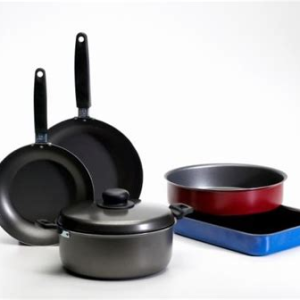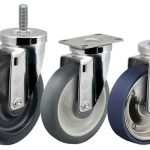What is PTFE? Well, if you’ve ever heard of Teflon, it is simply PTFE by another name. This is what PTFE is known as commercially. PTFE stands for polytetrafluoroethylene and is a fluoropolymer used for its amazing non-stick qualities. You may have seen Teflon when you’ve bought pots and pans and this is because PTFE has strong heat and corrosion resistance.
PTFE is also inert to chemical reactions and offers good insulation for electrical appliances so is commonly used in a number of industries, including medical, chemical and automobile industries. The PTFE industry has enjoyed considerable growth and this looks set to continue as it is increasingly being applied in chemical and electronic industries. There is also a future for polymers in fuel cells and photovoltaic modules.
So, what makes PTFE so special?
It has a highly symmetrical structure and it is this that gives it greater hydrophobic properties and a lower surface tension. PTFE can come in granular or powder form and in this semi crystalline state has a high melting point and viscosity. This makes PTFE a difficult substance to use extrusion or injection moulding techniques and so is treated more like a powder for processing purposes rather than like a traditional plastic.
Other substances can be added to the mix to improve qualities or add different properties. For example, bronze is often added to improve its electrical conductivity and thermal properties. When carbon is added, the hardness properties are improved and the PTFE becomes more resistant to wear and tear damage. Fibres of glass can also be added to further improve strength against wear and tear.
As we can see, additives during the manufacturing process can change the desired properties of PTFE. This means it can be applied in countless different ways for a whole host of different industries including aerospace, automobile, chemical and medical.
Thanks to its high melting point, PTFE is commonly used in sheet or film form in the packaging industry. Due to its inertness, it makes ideal packaging for products like cosmetics, chemical goods and medicine.
The widest application of PTFE is for industrial coatings. For information on PTFE Coating, visit Poeton. As previously mentioned, because it is highly resistant to wear and tear and changes in temperature, it is ideal for demanding environments. PTFE acts as a lubricant when building ignition systems for rockets, as well as providing the coating on different types of bullets to reduce friction when travelling down the barrel.
Other common items that use PTFE coating include hair straighteners, windscreen wiper coatings and hoses that operate in harsh environments. Non-stick cookware is also coated in PTFE as it prevents any food from sticking to the pans.
Teflon is a commercial name and a high grade of PTFE. It boasts excellent thermal and chemical resistance combined with low surface tension and this is what makes it the top choice for harsh environments, such as those often found in the pharmaceutical, aerospace and food industries.



